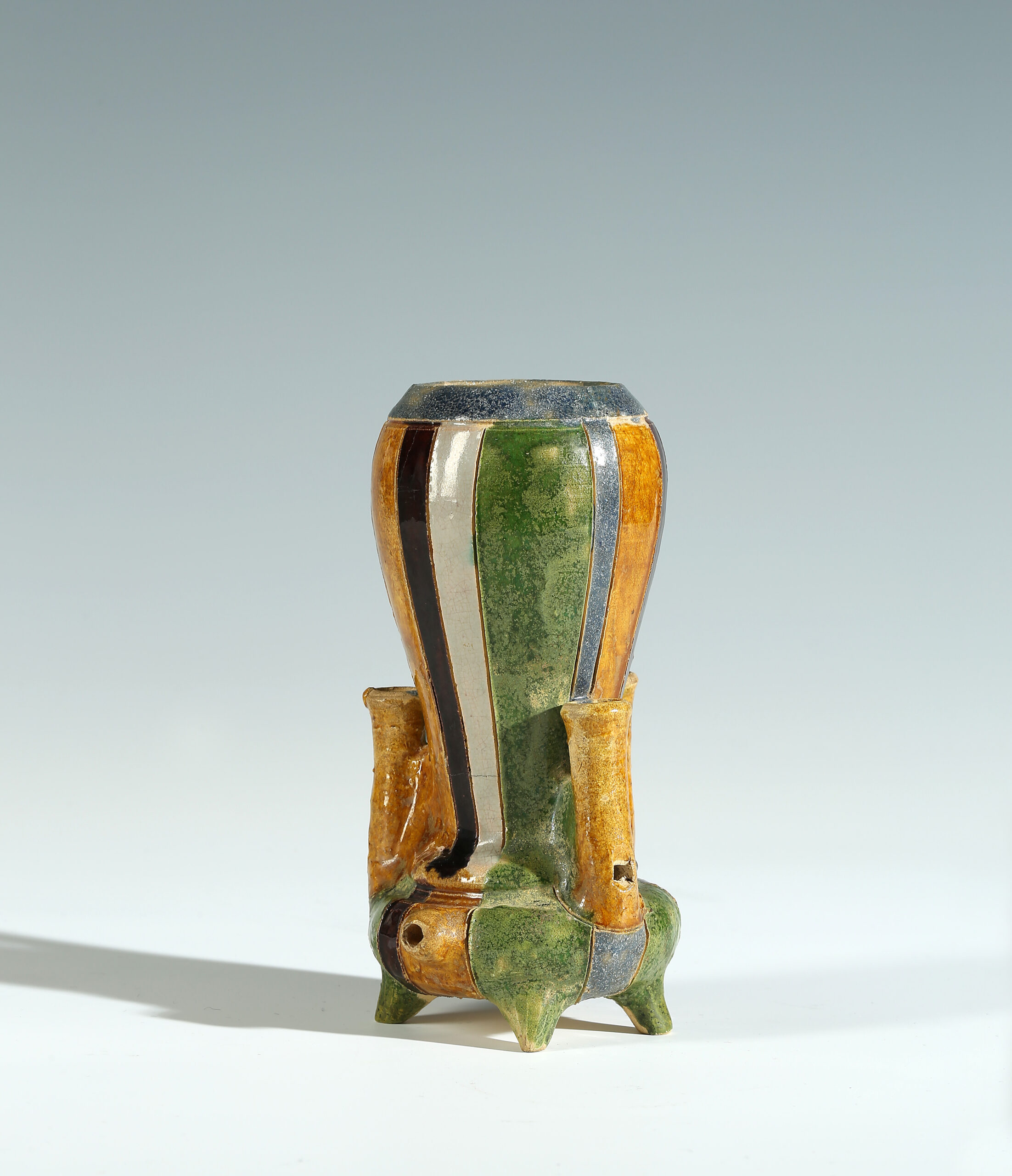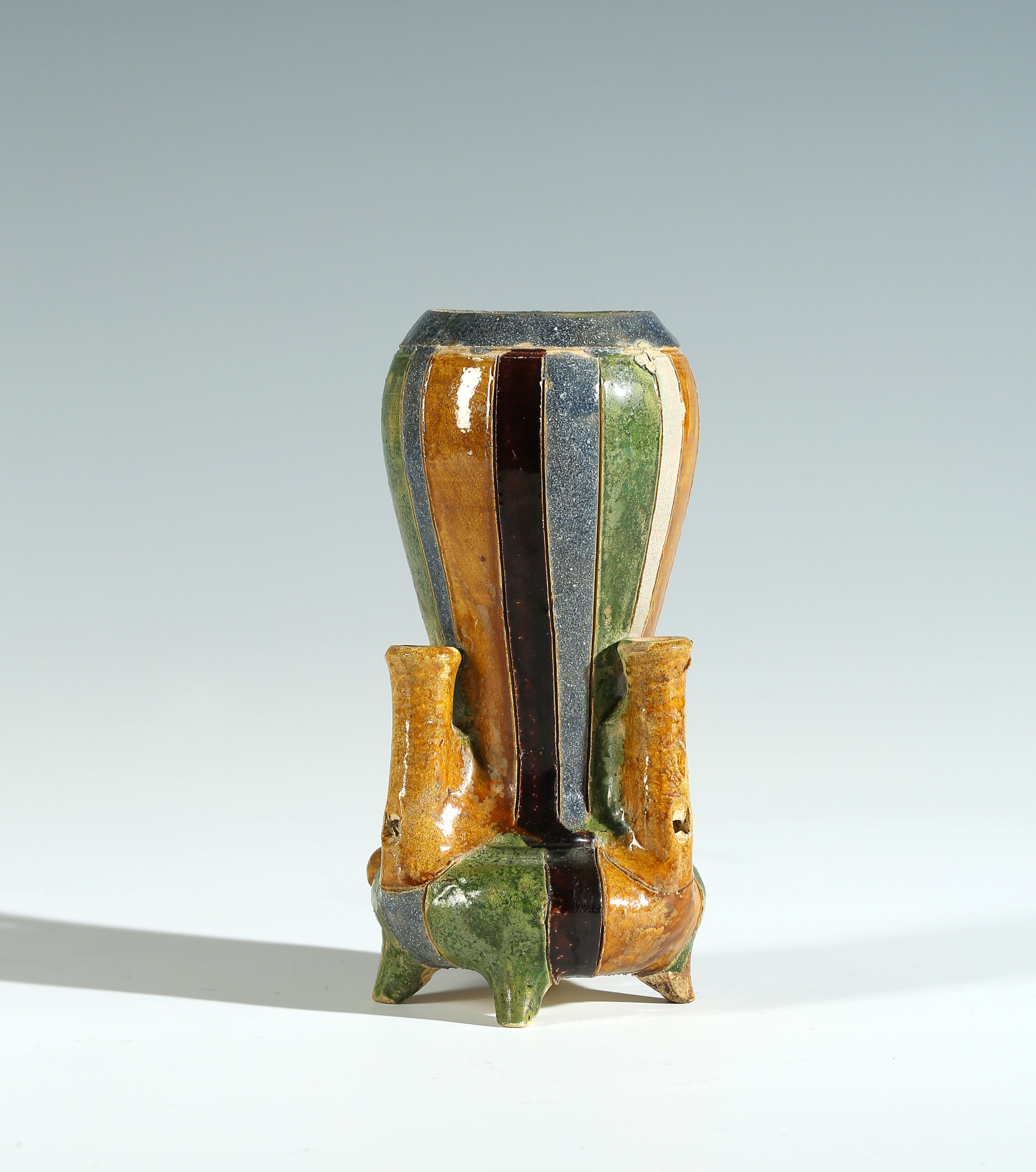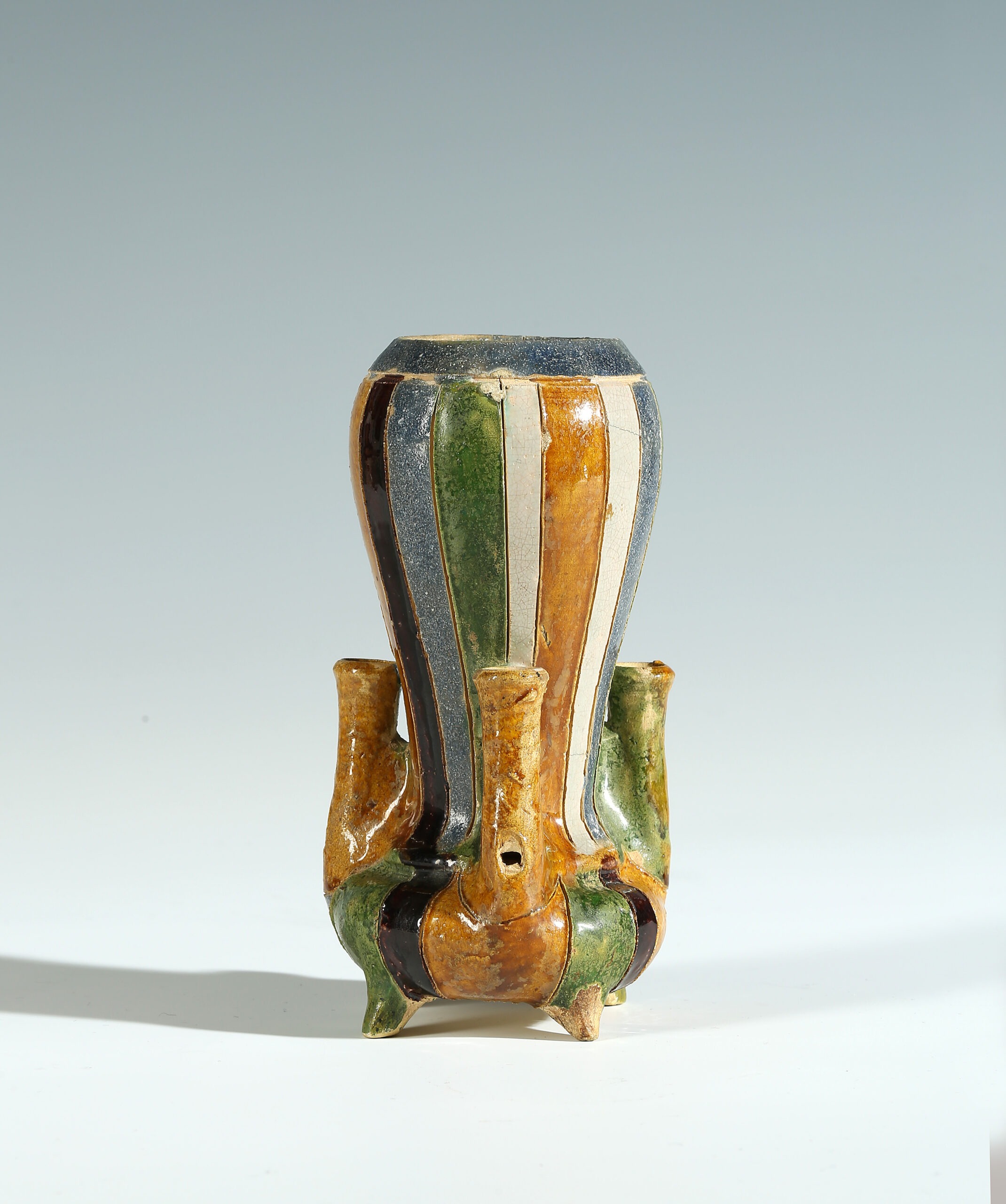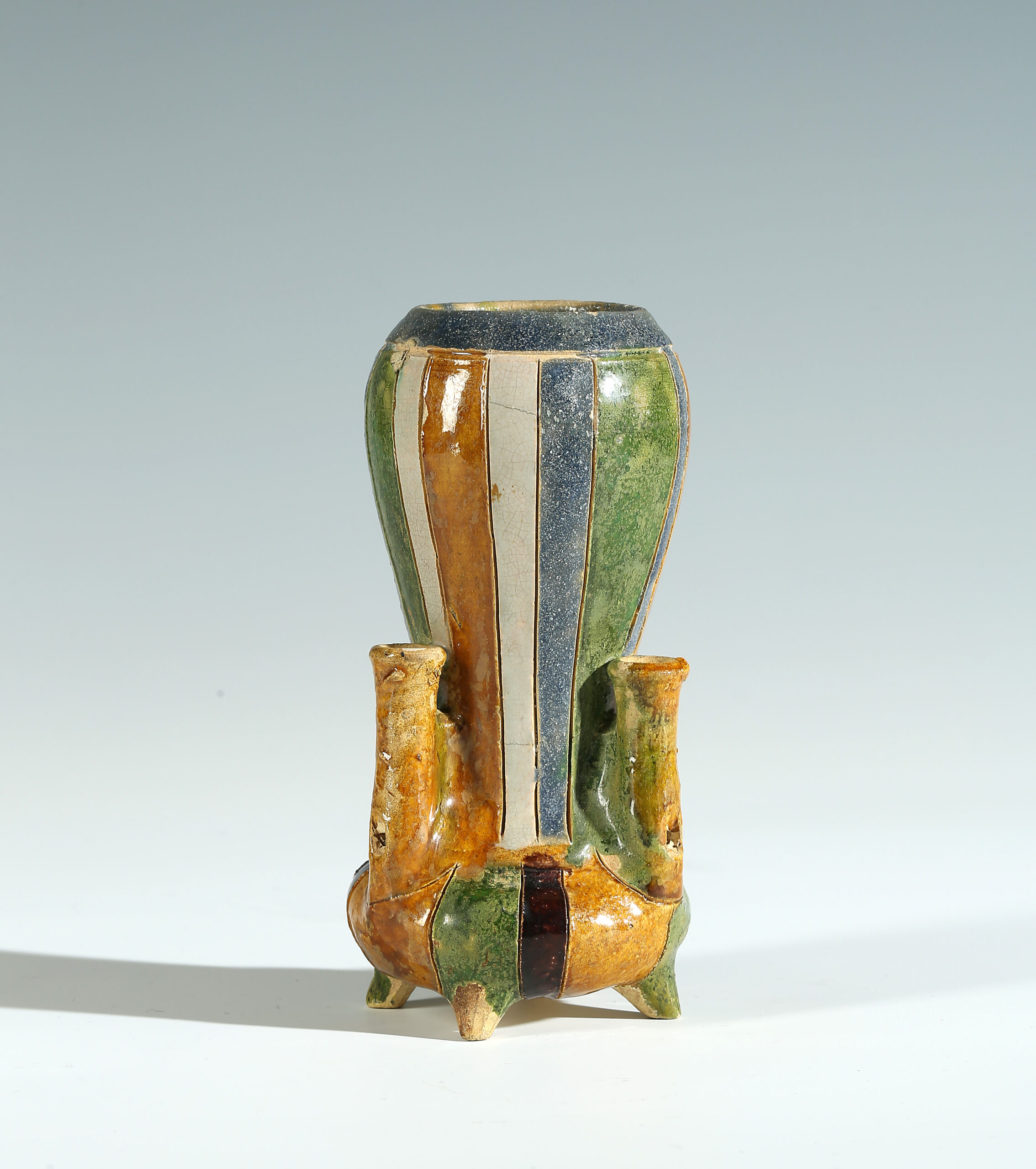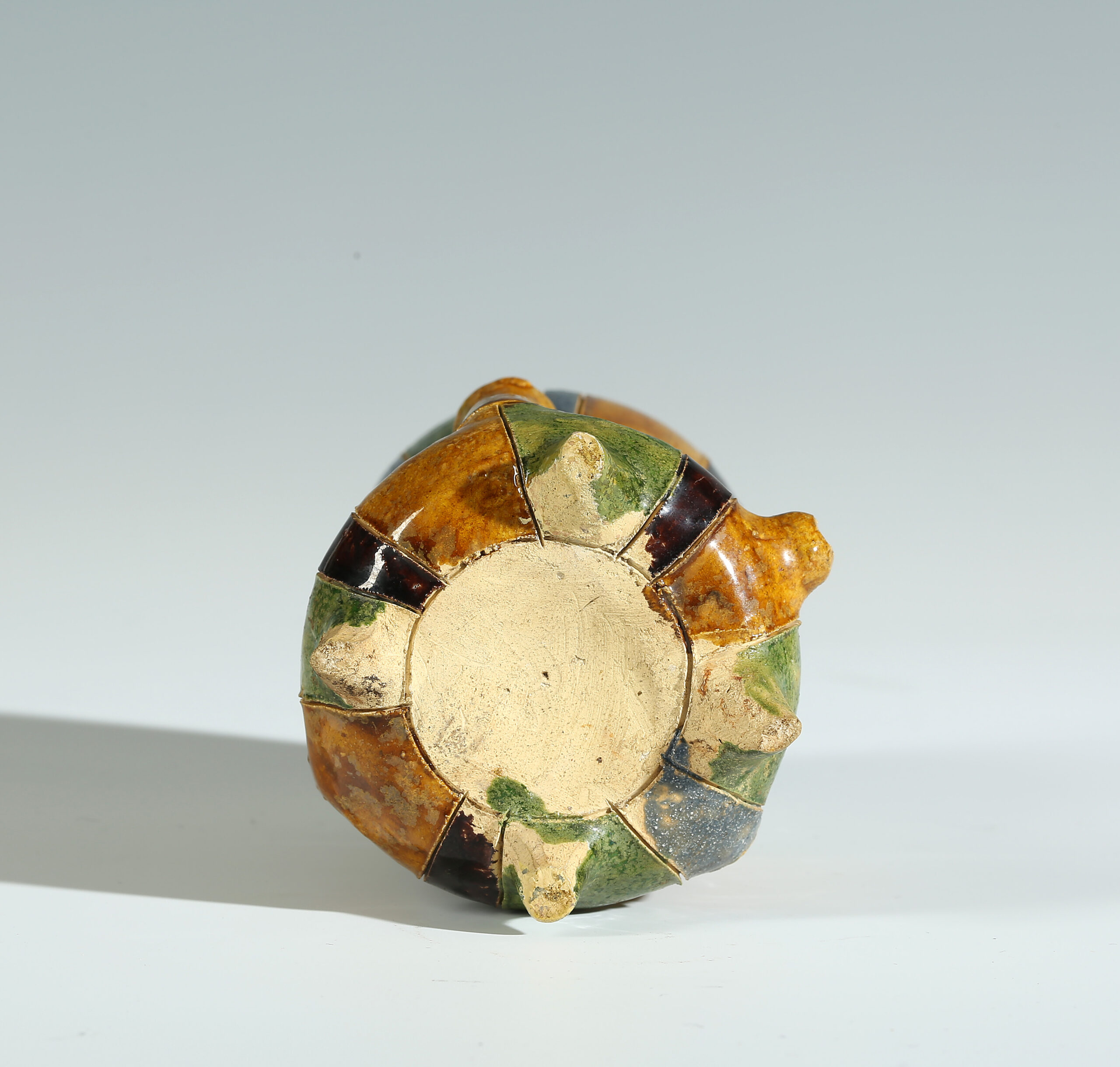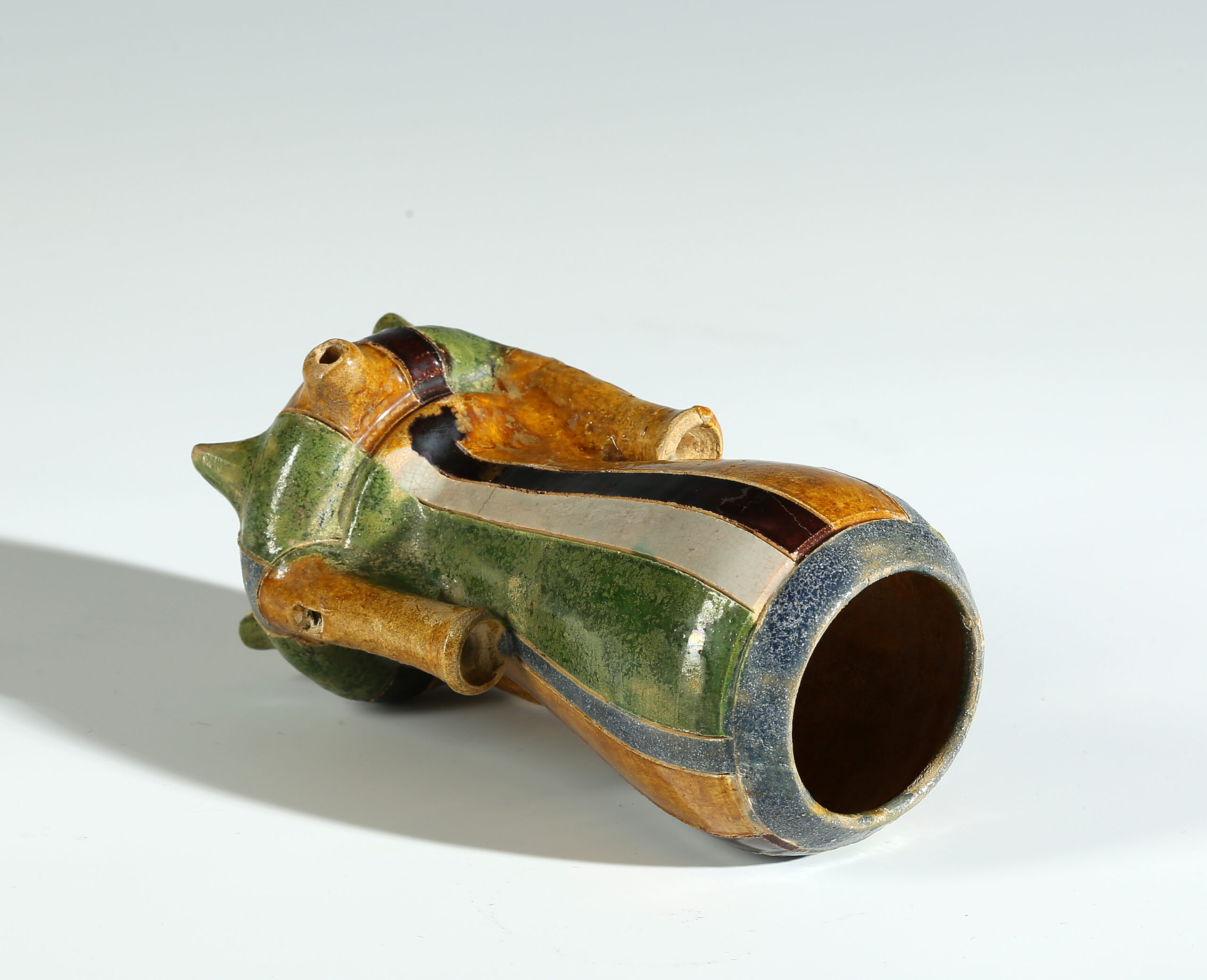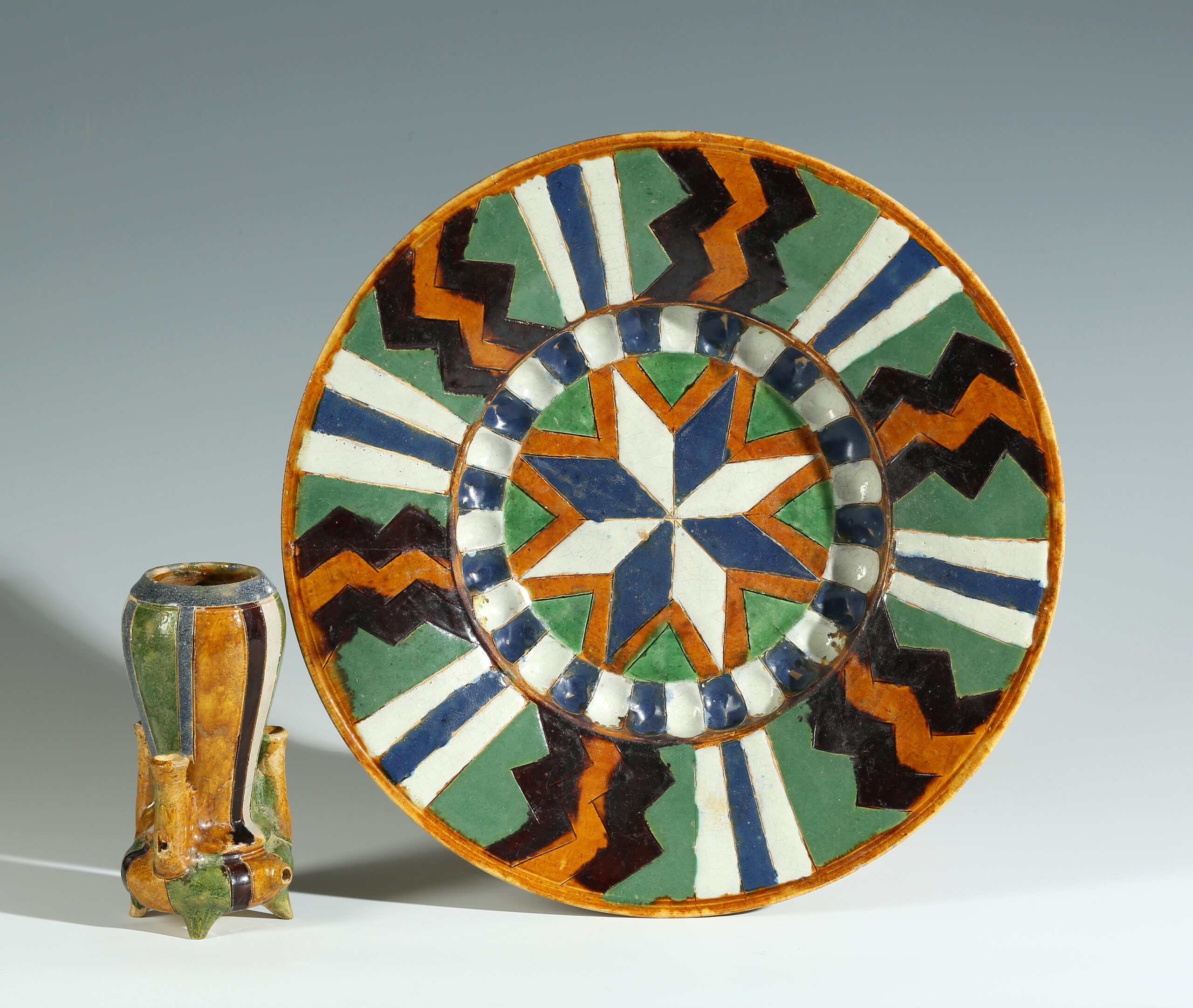The baluster body supported on a hollow base with a mouthpiece connected to three whistles applied to the sides. Decorated with vertical bands of ochre, manganese, white/tin glaze and green separated by channels formed by knife-cut partitions. Perhaps a child’s toy or a novelty drinking game? The note changes when the apertures are covered with one’s figures.
No other example of this form has been documented and so we were delighted to receive an email in January 2024 from a Swedish archaeologist, Loa Lindgren of the Statens Historika Museer, to say that they had recently excavated sherds exactly matching our whistle. These sherds were excavated in a 16th century priest’s house outside of the city of Norrköping in Sweden.

Loa Lindgren wrote that “The context of the sherds is clearly in the version of the priest’s house that would have been standing during the 1500s. And yes, the priest would have been a protestant by then. While there is no clear link to southern Germany, there are plenty of items from different areas in Germany. Perhaps mainly the northern part as well as ceramics and glass from the Köln area. But the priest would for sure have had access to a large (trade)network seeing as we have glass beakers made also in Böhmen and in Venice.” The archeological report is expected to be published in 2025 or 2026.
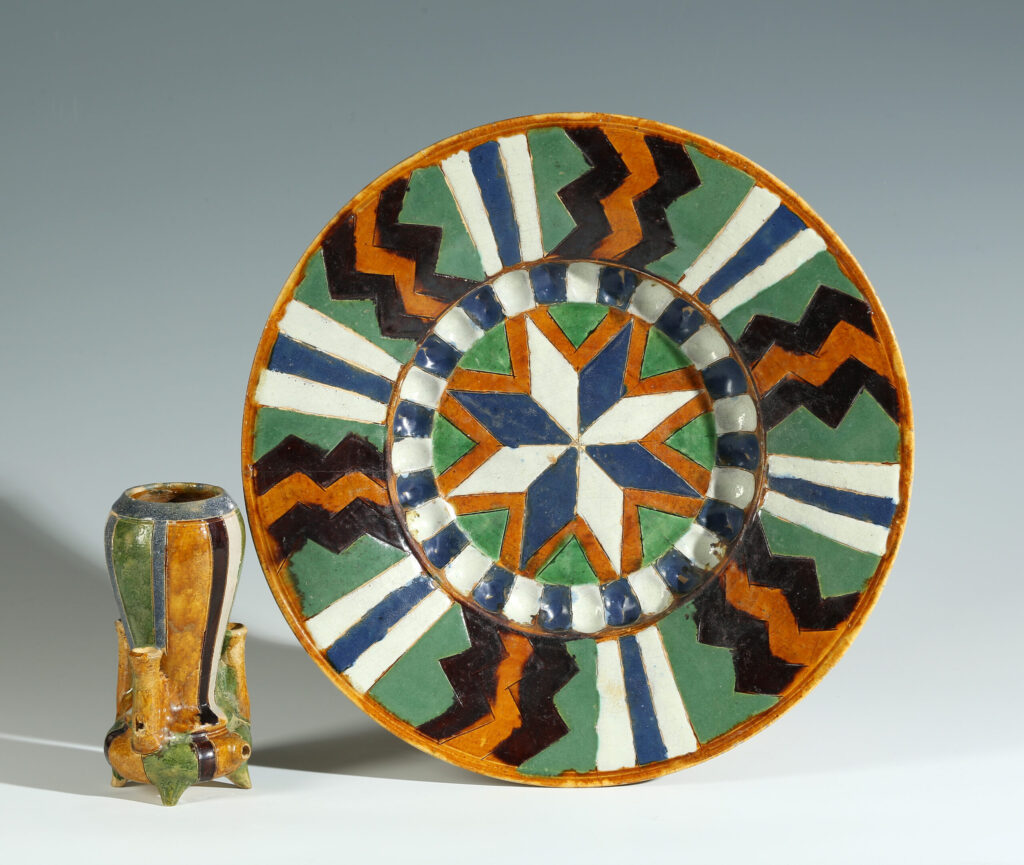
This type of pottery evolved from the tradition of German stove tile production, distinctive for their vibrant glazes and rich colour palette. The technique and glazes used are identical to those on the rare dish with radiating design that we currently have in stock, it is probably from the same workshop. We have found other examples of these dishes in the MAK Vienna, and the other illustrated in black and white in the Lanna collection, Prague.
Thermoluminescence Analysis by Oxford Authentication, sample No. N122e11, estimated the date of the last firing to be between 350 and 550 years ago, thus consistent with our dating.
Condition:
Some glaze cracks, no restoration.
It was said to be excavated in Antwerp in the 1970s or 80s, there is some sign of the surface degradation and iridescence that one would expect.
Provenance:
Former collection of Mr. Tiemen Helperi Kimm (1930 – 2017), former curator of the “Niemeyer Tabaksmuseum” and director of the “Noordelijk Scheepvaartmuseum” in Groningen.
Reportedly found during excavations in Antwerp (late 1970s / early 1980s).
References:
‘Sammlung des Freiherrn Adalbert von Lanna, Prague’, Rudolph Lepke’s Kunst-Auctions-Haus, Berlin, 9-16 November 1909, lot 591



